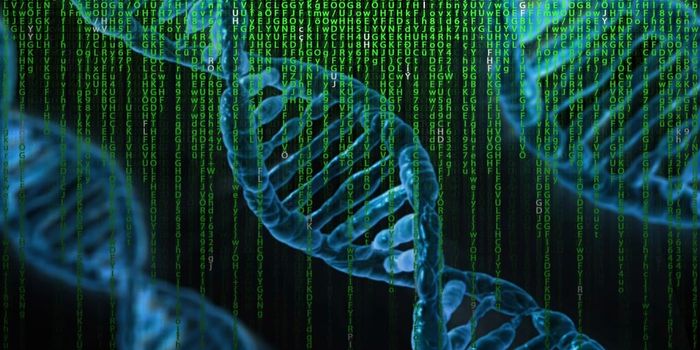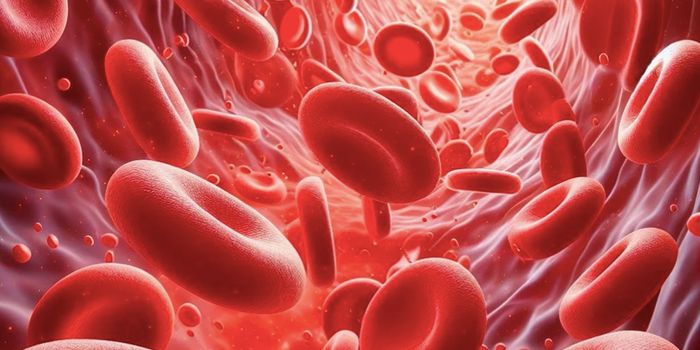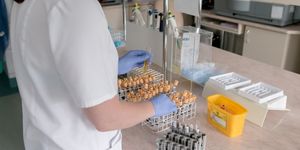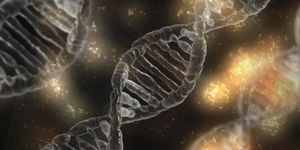To Outsmart Salmonella, Cells Can Commit Suicide in Different Ways
When cells are infected with some strains of the Salmonella bacterium, it can cause typhoid fever, which is thought to result in the deaths of over 100,000 people every year around the world. By growing intracellularly, the microbial pathogen can shield itself from the immune system, and intentional cell death can, therefore, impede Salmonella infections. Reporting in the journal Immunity, scientists have now learned that there are multiple ways that cells can die; Salmonella has tried to evade the impacts of suicidal cells, so cells have evolved alternative mechanisms that can still prevent the spread of Salmonella and typhoid fever through cell death.
"The rapid death of infected cells is an important protective strategy against intracellular bacteria. This stops the reproduction and spread of the bacteria, and can trigger protective immune defenses at the site of the infection, which further control the infection," explained University of Melbourne Professor Sammy Bedoui.
"Many proteins have been thought to be important for driving the death of bacteria-infected cells, which signal within cells and also degrade key components of the cell to bring about its death. However, there has been uncertainty about precisely how bacteria-infected cells die, the key molecules involved, and what this means for controlling an infection," added Bedoui.
In this study, the researchers knocked out various combinations of proteins that are involved in cell death pathways to learn more about the roles they play during Salmonella infections.
"We investigated the roles of proteins involved in three key types of cell death: apoptosis, pyroptosis, and necroptosis," said Associate Professor Marco Herold of the Walter and Eliza Hall Institute. "While these processes all result in cell death, each occurs differently at the molecular level, and has different consequences for triggering immunity and inflammation."
If only one of the cell death pathways was disrupted, the Salmonella infections were still controlled; the impact was minor, suggesting that the cells are not dependent on a single system, said Walter and Eliza Hall Institute researchers Dr. Marcel Doerflinger. But that was all the cells could tolerate.
"When we disabled two or all three forms of cell death, we saw that Salmonella infections were not controlled and the bacteria rapidly spread. This suggested that cells have developed several backups to ensure cell death happens if there is a fault in one cell death pathway. While we only studied Salmonella, we speculate that our findings might be relevant to other intracellular pathogens such as the bacterium that causes tuberculosis," he added.
This work also discovered previously unknown roles of caspases, which are involved in cell death. "Until now, certain caspases including two known as caspase 1 and caspase 8 had very well-defined roles as early triggers of two distinct types of cell death. Our results showed that contrary to current perceptions these caspases can act within the other pathway and even at later, critical stages of cell death when the cell is being dismantled,” said Walter and Eliza Hall Institute researcher Professor Andreas Strasser.
"This is an example of another fail-safe process in the overall cell death machinery that ensures protection against pathogens like Salmonella," he said.
In a world full of microbes, cells are in an ongoing race to win a never-ending battle for survival.
"Throughout evolution, both sides have developed new tactics in an arms race for supremacy. Living and multiplying inside cells - rather than outside - helped the bacteria avoid immune detection, but animals responded by developing ways for infected cells to undergo altruistic suicide - which we have revealed is a highly coordinated but flexible system that has several fail-safe mechanisms," Strasser said.
Sources: AAAS/Eurekalert! via Walter and Eliza Hall Institute, Immunity








